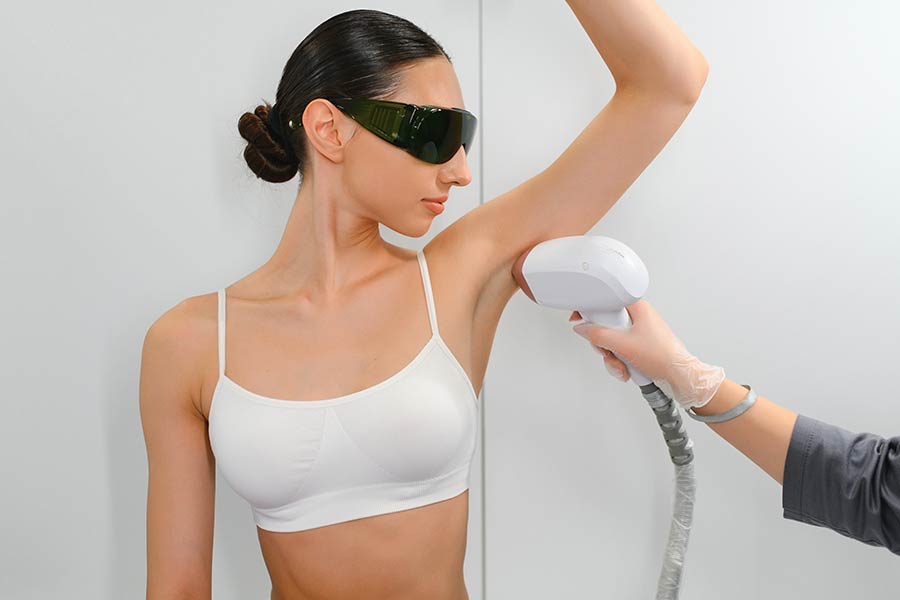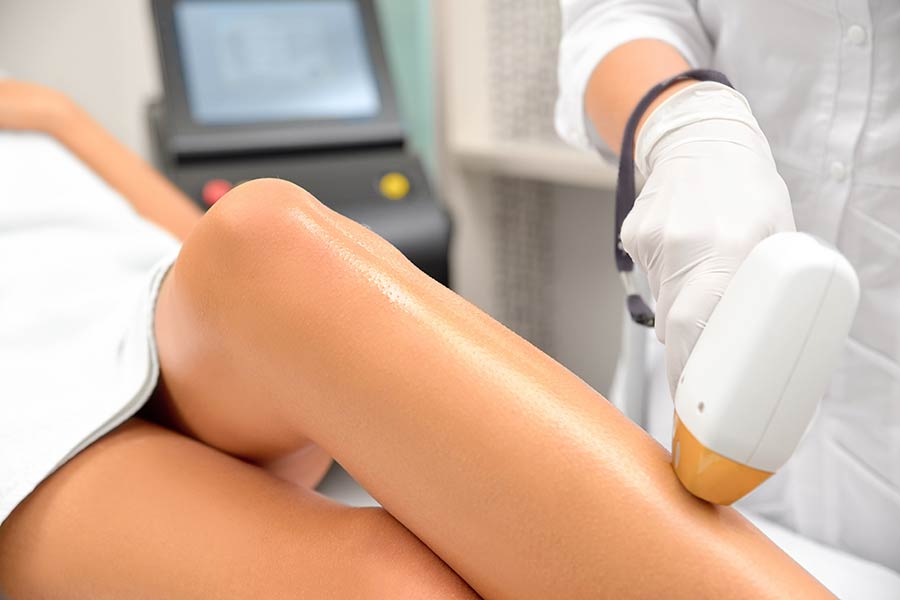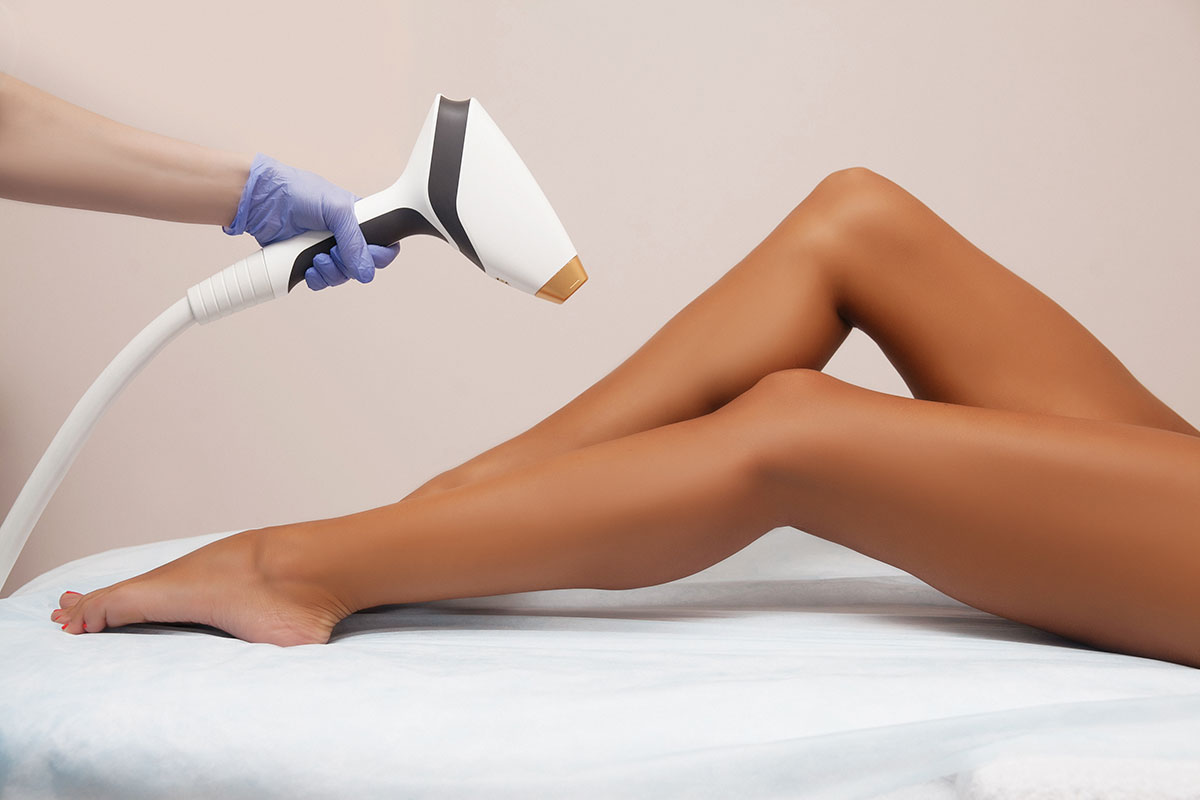Gone are the days of relying solely on razors, wax strips, and plucking, thanks to the dawn of laser hair removal, a process known as selective photothermolysis, often performed by dermatologists and plastic surgeons. This game-changer in skincare technology zaps away unwanted fuzz, making it a go-to for those craving smoother skin without the daily hassle. It's like having a magic wand at your disposal—point, zap, and poof! Your hair woes are gone. But how did we get here? From ancient hair removal methods involving shells and beeswax to the first laser beam targeting hairs in the late 20th century, this journey reflects our endless quest for innovation. Dive into the world of laser hair removal with us; it's not just about shedding unwanted hair but embracing a slice of futuristic self-care.
Key Takeaways
- Laser hair removal offers a long-term solution for reducing hair growth, but understanding the process and preparing properly can significantly enhance your results.
- Always consult with a professional to assess your suitability for the treatment and to tailor a plan that meets your specific skin and hair type needs.
- Following post-treatment care instructions, such as avoiding sun exposure and applying recommended skincare products, is crucial for recovery and achieving optimal outcomes.
- Consider at-home laser options for a more convenient and cost-effective approach, but weigh their effectiveness against professional treatments.
- Be aware of the potential risks and recovery time associated with laser hair removal to set realistic expectations and plan accordingly.
- Factor in the financial aspects, including the number of sessions needed and any maintenance treatments, when budgeting for laser hair removal as part of your skincare routine.
Understanding Laser Hair Removal
Overview
Laser hair removal, a procedure targeting melanin, has become a popular choice for patients with various skin types looking to reduce unwanted hair. Its effectiveness lies in its ability to target and destroy hair follicles with precision. This technology works on various body areas, including the face, legs, arms, underarms, and bikini line. It caters to a wide audience seeking smoother skin without the hassle of frequent shaving or waxing.
Benefits
Smooth Skin
Laser hair removal offers a path to smoother skin by focusing energy directly on hair follicles. This process not only removes existing hairs but also significantly reduces their growth over time. Unlike traditional methods, laser treatment minimizes the occurrence of ingrown hairs, leading to an improvement in skin texture. Patients often report feeling more confident with their skin's appearance after undergoing laser hair removal.
Long-term Results
One of the most compelling aspects of laser hair removal is its long-term results. Most individuals see a dramatic reduction in hair growth after 3 to 7 sessions. These results are predictable, giving patients confidence in the treatment's effectiveness. To maintain these outcomes, follow-up sessions might be necessary, ensuring that the skin remains smooth and hair-free for longer periods.
Traditional vs Laser
Efficiency Comparison
When compared to waxing or shaving, laser hair removal stands out for its efficiency. It saves time in the long run by reducing the need for regular treatments. Furthermore, it proves to be cost-effective as the expense of continuous traditional methods accumulates over time. The precision of lasers means they target hairs without harming surrounding skin, making every session worth the investment.
Skin Health
Laser hair removal is not just about aesthetics; it also benefits skin health. It leads to fewer irritations and infections than other methods since it doesn't involve pulling on the skin or causing micro-tears like waxing or shaving can. Moreover, it promotes smoother skin with minimal risk of ingrown hairs. When performed by qualified professionals, laser treatments have a minimal risk of adverse reactions, ensuring safety and comfort for patients.
Preparing for Treatment
Consultation Tips
Before deciding on laser hair removal, consulting with a professional is crucial. This meeting is your chance to ask important questions. You might want to know about the type of laser they will use and how much experience the clinician has. These details matter because different lasers work better for certain skin and hair types.
You should also discuss your skin type and hair color. This conversation helps assess how effective the treatment could be for you. Another key point is to ask about the expected number of sessions and the overall costs involved. Understanding these aspects ensures you have a clear picture before starting your treatment journey.
Pre-treatment Care
Skin Preparation
Getting your skin ready is an essential step before undergoing laser hair removal. One important rule is to avoid plucking or waxing the area you plan to treat. These methods remove hair from the root, which can make laser treatments less effective.
Instead, shave the targeted area the day before your procedure. Shaving keeps the hair in place but makes it easier for the laser to target. Also, check with your provider about any skincare products you should avoid before treatment. Some ingredients might increase skin sensitivity, affecting the process.
Avoiding Sun Exposure
Protecting your skin from the sun is vital both before and after laser hair removal. Sun exposure can lead to skin damage and affect the treatment's success. If avoiding the sun entirely isn't possible, using a high SPF sunscreen is a must.
Remember, tanned skin can reduce how well the laser works because it changes how light absorbs into your skin. Keeping your skin its natural color helps ensure the best possible results from your treatment.
The Laser Removal Process
Step-by-Step Guide
Before diving into the session, it's crucial to understand what happens. First, the area for hair removal gets cleaned. This ensures no dirt or oil interferes with the process. Then, a skilled practitioner adjusts the laser equipment based on your hair's color, thickness, and the area's skin.
During treatment, a hand-held laser device is pressed against your skin. As it activates, you might feel a snapping sensation, like a rubber band hitting your skin. It's quick but can vary in discomfort depending on the body part.
After zapping all the targeted hairs, you'll receive cooling gel or ice packs. This helps ease any immediate discomfort. The whole thing can take from a few minutes to an hour, depending on the treated size.
Post-treatment care is simple but vital. Keep the area clean and avoid sun exposure. Your specialist will give more detailed aftercare instructions.
During the Session
Safety Measures
Safety first! Always choose a qualified and experienced practitioner for laser hair removal. They know how to handle the equipment correctly and minimize risks. Eye protection is non-negotiable during the session to shield against accidental laser exposure.
The FDA plays a significant role here too. They regulate devices used in these treatments ensuring they meet safety standards.
Pain Management
Let's talk about pain. Everyone experiences it differently during laser hair removal. Some just feel tingling; others might find it more uncomfortable.
To manage this, practitioners often use cooling devices or apply topical anesthetics before starting. These methods significantly reduce discomfort making the procedure more bearable.
It's important to discuss pain management options with your practitioner beforehand. They can tailor their approach to suit your tolerance level.
Post-Treatment Care
Immediate Aftercare
After the laser hair removal process, immediate aftercare is crucial for comfort and skin health. Applying ice can greatly reduce swelling and discomfort. It's a simple step but very effective.
Avoiding heat sources, like hot showers or saunas, helps the skin recover. These can irritate the treated area. Staying away from sweat-inducing activities for at least 24 hours is also advised. This prevents irritation and potential infection.
Following the specific instructions from your treatment provider is key. They know your skin condition and how the treatment went. Their advice tailors to ensuring a smooth recovery.
Long-term Skin Care
Moisturizing Tips
Using gentle, fragrance-free moisturizers is important after laser hair removal. It soothes the skin and reduces dryness. Look for products designed for sensitive skin.
Keeping the skin hydrated promotes healing. Drink plenty of water and use suitable moisturizers regularly. Avoid products with irritating ingredients, like alcohol or fragrances. They can delay recovery.
Sun Protection
Applying broad-spectrum sunscreen to treated areas is non-negotiable. It protects against UV rays that can cause hyperpigmentation and further damage to sensitive skin.
Sun protection helps maintain the results of your laser treatment longer. It's essential for preventing unwanted side effects. Wearing protective clothing when outdoors ensures extra safety for your treated areas.
At-Home Laser Options
Device Selection
Choosing the right laser for hair removal at home is crucial. Different types of lasers work best on various skin and hair colors. For example, diode lasers are great for darker skin tones, while alexandrite lasers suit lighter skin better.
The effectiveness of a device also depends on hair thickness and color. Darker, coarser hair responds well to most lasers. However, people with light or fine hair might need specific types, like the Nd:YAG laser.
A consultation with a specialist can help determine the best option. They can assess your skin and hair type to recommend the most effective device. This step ensures you get results without damaging your skin.
Advancements in laser technology have made at-home devices safer and more effective. New models come with sensors that adjust to your skin tone, reducing risks. These improvements mean better results with fewer side effects.
Safety Precautions
When using an at-home laser hair removal device, safety comes first. Read the manual carefully before starting. It contains important information about pre-treatment preparations and how to use the device safely.
Wearing protective goggles is essential during each session to protect your eyes from harmful laser rays. Never skip this step, even if you're treating areas far from your eyes.
Following pre and post-treatment guidelines is crucial for avoiding side effects like burns or pigmentation changes. Since we discussed post-treatment care previously, remember those tips here too. Keeping your skin cool and moisturized after each session helps it recover faster.
Avoid exposing treated areas to direct sunlight for at least a week after treatment. If you must go outside, apply a broad-spectrum sunscreen with high SPF.
Understanding Risks and Recovery
Potential Side Effects
After opting for laser hair removal, most people will notice redness and swelling around the treated area. These symptoms are common and usually go away after a few hours or days. It's your skin's natural response to the treatment, much like how it reacts to slight sunburn.
However, there are less common side effects that can occur. In rare cases, individuals might experience scarring or changes in skin color, especially if they have darker or very light skin. These side effects are unusual but important to be aware of.
If you notice any unusual or prolonged side effects, such as blistering or severe redness that doesn't improve, it's crucial to seek medical advice. Your doctor can help determine if what you're experiencing is part of the normal healing process or if it requires further attention.
Recovery Timeline
The recovery process after a laser hair removal session is generally quick and uncomplicated. Most people can return to their daily activities immediately, with no downtime required. However, the treated area might look and feel like it's sunburned for a day or two afterward.
In the days following treatment, you may notice some changes in your skin's appearance. The treated hair will begin to shed, which is a normal part of the process. This shedding can sometimes be mistaken for hair growth, but it's actually a sign that the treatment is working.
It's important to know what signs indicate proper healing versus complications. Proper healing includes mild redness and swelling that subsides within a few days. On the other hand, signs of complications could include severe pain, blistering, or changes in skin pigmentation lasting more than a week. If you experience any of these symptoms, contacting your healthcare provider is essential for guidance on how to proceed.
Selecting a Treatment Plan
Considering Skin Type
Laser hair removal has become a popular way to reduce unwanted hair. Yet, its success varies with skin type. This is because laser technology targets the melanin in hair follicles, and melanin levels differ across skin types.
For those with darker skin, older laser models posed risks like burns or pigmentation changes. Luckily, advancements in laser tech have made it safer for a wider range of skin colors. Now, specific lasers cater to different skin types, minimizing risks and enhancing effectiveness.
It's crucial to get a tailored treatment plan. This plan takes into account your skin's sensitivity and melanin level. A professional can help choose the right laser setting for you.
Hair Type Considerations
Not all hair is the same when it comes to laser removal. The color and thickness of your hair play big roles in how well the treatment works.
Dark, thick hair absorbs laser light better, making it easier to treat. Light-colored hair, like blonde or gray, lacks enough melanin for the laser to target effectively. This often means more sessions are needed for noticeable results.
If you have light-colored hair, consult with a specialist first. They can assess whether laser treatment is viable for you or suggest alternatives.
Financial Considerations
Cost Analysis
The cost of laser hair removal varies widely. It depends on the size of the area being treated, the clinic's location, and the number of sessions needed. For example, removing hair from a small area like the upper lip costs less than treating larger areas such as the back or legs.
A critical factor in determining cost is the number of sessions required. Most people need between 3 to 7 sessions for optimal results. The clinic's location also plays a role; treatments in big cities often cost more due to higher operating expenses.
Comparing laser hair removal to traditional methods like shaving or waxing reveals long-term savings. Though upfront costs are higher, you spend less over time because you reduce or eliminate the need for regular purchases of razors, creams, or professional waxing services.
To manage costs, look for package deals or promotions. Many clinics offer discounted rates when you pay for multiple sessions upfront. This can significantly lower your overall investment.
Value for Money
Laser hair removal offers excellent value for money, not just in financial terms but also in time and convenience. Consider the hours spent shaving each week or the monthly appointments for waxing. Laser treatments can drastically reduce this time commitment, giving you back precious hours.
Beyond saving time, think about the reduced need for other hair removal products. No more razors, shaving cream, or wax strips to buy means savings accumulate over months and years.
But it's not all about tangible benefits. The intangible gains from laser hair removal are significant too. Many people report a boost in confidence from having smooth skin without the irritation that comes from other hair removal methods. The convenience of not worrying about daily hair removal routines cannot be overstated.
Testimonials and studies support these claims, showing high levels of satisfaction among those who choose laser treatment. People often express that their investment was worth it for both the visible results and how it made them feel about themselves.
Transforming Your Skincare Routine
Integrating Laser Removal
Laser hair removal isn't just about getting rid of unwanted hair. It's a step towards a more streamlined skincare routine. By reducing hair growth, your skin becomes a smoother canvas for other treatments. Moisturizers absorb better, and makeup applies more evenly without the interference of stubble or ingrown hairs.
Combining laser hair removal with procedures like chemical peels or microdermabrasion can yield impressive results. The absence of hair allows for deeper penetration of products, enhancing their efficacy. This synergy not only improves skin texture but also its overall health.
Before you dive in, it’s crucial to chat with a skincare professional. They can help craft a beauty regimen that aligns with your goals. This planning ensures that each treatment complements the others, leading to optimal outcomes.
Maintenance Tips
After laser sessions, maintaining that silky-smooth skin is key. Gentle exfoliation helps remove dead skin cells and prevents ingrown hairs. However, it's important to wait a few days post-treatment to start exfoliating to avoid irritation.
Touch-up sessions might be necessary as some hair could regrow over time. Recognizing when these are needed is simple: watch for new growth that feels out of place on your otherwise smooth skin.
Your lifestyle plays a big role in keeping your skin happy post-laser treatment. Eating well and staying hydrated contribute to skin health, making it more resilient and radiant. Incorporate foods rich in antioxidants and drink plenty of water to support your skin from the inside out.
Summary
Diving into the world of laser hair removal, you've journeyed from understanding the basics to mastering post-treatment care and even exploring at-home options. You're now equipped with the knowledge to navigate risks, select a treatment plan that fits your needs, and understand how this choice can transform your skincare routine. It's not just about zapping unwanted hair; it's about embracing confidence and making an informed decision that aligns with your lifestyle and budget.
hat's next? Take the leap! Start by researching clinics or at-home devices that have raving reviews and don't forget to consult with a professional to tailor a plan that's just right for you. Remember, it's your skin, your rules. Embrace the change and let your confidence shine through smooth, carefree skin. Ready, set, zap!
Frequently Asked Questions
How does laser hair removal work?
Laser hair removal zaps your hair right at the root by targeting the pigment. Think of it as a precision-guided missile that only targets the dark spots, leaving the skin around it untouched.
Is preparing for laser treatment complicated?
Not really! It's like getting ready for a beach day - stay out of the sun, don't pluck or wax, and shave the area a day before. Simple!
What should I expect during the laser removal process?
Imagine a tiny rubber band snap against your skin—quick and with a pinch. That's pretty much it. The laser does its magic in short bursts, so you're in and out before you know it.
How do I care for my skin after treatment?
Treat your skin like a baby’s - gentle and with lots of TLC. Avoid the sun like it's your ex, keep things cool with ice packs if needed, and moisturize generously.
Can I use at-home laser options safely?
Absolutely, but think of them as your home gym equipment - great to have but requires reading the manual thoroughly. Start slow, follow instructions closely, and always patch test.
What are the risks of laser hair removal?
It's like going on a roller coaster ride - thrilling but with minor risks. You might experience redness or irritation, but serious side effects are rare when you're in good hands.
How do I choose a treatment plan that’s right for me?
It's like picking out an outfit - what works for one may not work for another. Consult with a professional to tailor a plan that fits your needs, lifestyle, and budget perfectly.
Are there any financial tips for managing the cost of treatments?
Think of it as investing in a timeless piece rather than splurging on fast fashion. Look into package deals or payment plans; many clinics offer these to make treatments more affordable over time.












